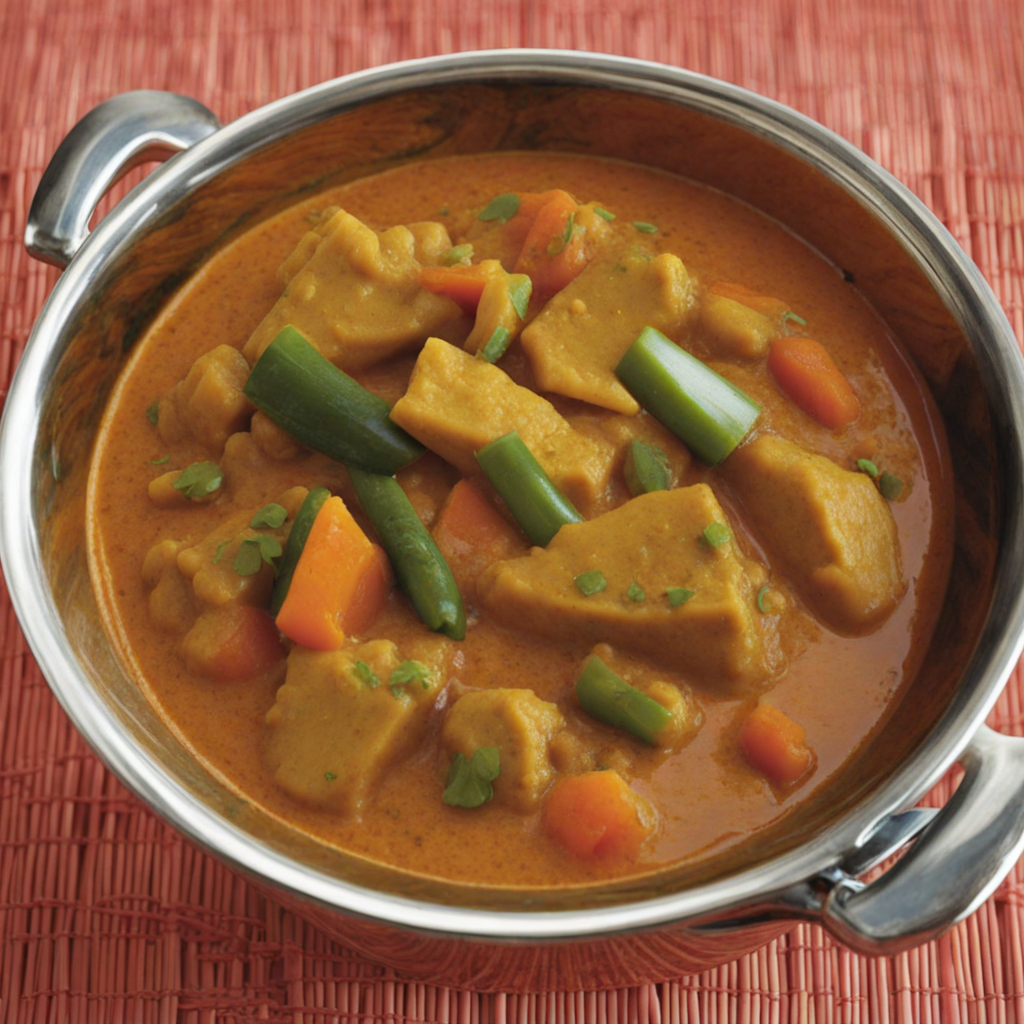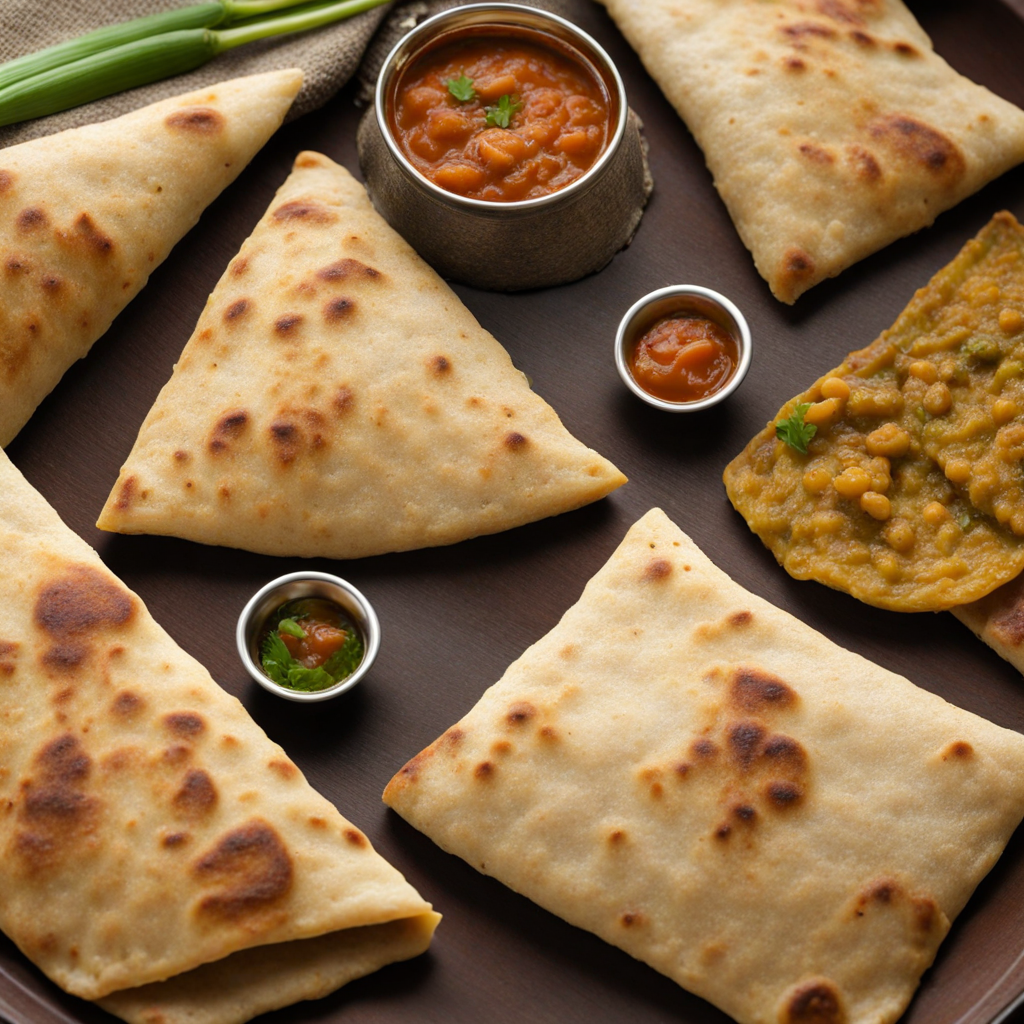Creole Cake
Creole Cake, a delightful treat from the vibrant island of Mauritius, embodies the rich tapestry of flavors influenced by the island's diverse cultural heritage. This cake is a celebration of local ingredients, often incorporating a variety of spices and exotic fruits that reflect the island's tropical climate. The base is typically made from a blend of flour, sugar, and eggs, but what sets it apart are the additions of grated coconut, ripe bananas, or even pineapple, which infuse the cake with a moist, fruity sweetness. The aroma of vanilla and a hint of cinnamon create an inviting scent that promises a unique culinary experience. The texture of Creole Cake is another highlight, offering a perfect balance between lightness and density. It has a crumb that is both tender and slightly chewy, thanks to the coconut, which also adds a subtle crunch. Often enjoyed as a snack with tea or as a dessert, this cake can be served plain or topped with a simple glaze made from powdered sugar and fresh citrus juice. The combination of flavors and textures makes each bite a delightful journey, evoking the warmth and hospitality of Mauritian culture. Pairing Creole Cake with a cup of local Mauritian tea or coffee enhances the experience further, as the warm beverages complement the cake's sweet and spicy notes. This indulgent dessert not only satisfies your sweet tooth but also offers a taste of the island's heritage, making it a must-try for anyone looking to explore the culinary delights of Mauritius. Whether you're enjoying it at a local café or baking it at home, Creole Cake is sure to leave a lasting impression on your palate.
How It Became This Dish
The History of Gâteau Créole: A Culinary Gem of Mauritius #### Origins and Cultural Tapestry Gâteau Créole, often referred to as "Creole Cake," is a delightful confection that embodies the rich cultural tapestry of Mauritius, an island nation located in the Indian Ocean. This small island has a storied history, influenced by a blend of African, Indian, French, and Chinese cultures, each contributing to the vibrant culinary landscape. The origins of Gâteau Créole can be traced back to the French colonial period in the 18th and 19th centuries when the island was a hub for trade and cultural exchange. The name "Gâteau Créole" itself reflects the Creole culture that emerged in Mauritius, where diverse ethnicities and traditions converged. The cake is typically made with simple ingredients such as flour, sugar, eggs, and butter, along with local flavorings like vanilla, coconut, and rum. These ingredients mirror the agricultural bounty of the island, heavily influenced by its tropical climate. #### Ingredients and Traditional Recipes Gâteau Créole is traditionally baked in a round or rectangular shape, and its texture is often described as moist and dense, resembling a pound cake. The classic version is a simple vanilla cake, but over time, variations have emerged, incorporating local flavors such as grated coconut, pineapple, and even spices like nutmeg and cinnamon. The addition of rum, a nod to the island's rich distilling heritage, lends a unique depth of flavor. Recipes for Gâteau Créole have been passed down through generations, often adapted to incorporate seasonal ingredients or family preferences. The cake can be served plain or with a glaze, and it is a popular choice for celebrations, gatherings, and religious occasions. It is particularly beloved in island festivities, where it symbolizes hospitality and the spirit of sharing. #### Cultural Significance Gâteau Créole holds a special place in the hearts of Mauritians, transcending mere sustenance to become a symbol of cultural identity and continuity. In a society where food plays a central role in social interactions, Gâteau Créole is often featured at familial gatherings, weddings, and religious ceremonies. The act of baking and sharing this cake fosters community bonds and reinforces familial ties. Moreover, the cake is intertwined with the island's heritage, reflecting the synthesis of different culinary traditions. The use of local ingredients and flavors demonstrates the resourcefulness of the Mauritian people, who have historically adapted their cooking practices to suit the available resources. This adaptability is a hallmark of Creole cuisine, which celebrates the fusion of diverse culinary influences. #### The Evolution of Gâteau Créole As Mauritius progressed through the 20th century, the popularity of Gâteau Créole remained steadfast, even as the island underwent significant social and economic changes. The post-independence era in the 1960s and 1970s saw a resurgence in national pride, and food became a means of celebrating the island's unique identity. Gâteau Créole, with its rich history and cultural resonance, became a staple in both homes and restaurants. During this period, the cake began to gain recognition beyond the island. As Mauritian communities migrated across the globe, they brought with them their culinary traditions, including Gâteau Créole. This diaspora helped to introduce the cake to a wider audience, allowing it to evolve and adapt in different contexts. In international food circles, Gâteau Créole is often showcased as a representative of Mauritian cuisine, highlighting its unique flavor profile and cultural significance. In the late 20th and early 21st centuries, the rise of food tourism and the global interest in authentic culinary experiences further propelled Gâteau Créole into the limelight. Culinary enthusiasts and food writers began to explore the island's gastronomy, and Gâteau Créole became a sought-after item on menus, often featured in cooking classes and culinary tours. This exposure has not only promoted the cake but has also encouraged a revival of traditional baking methods and local ingredient sourcing. #### Gâteau Créole Today Today, Gâteau Créole continues to thrive as a beloved dessert in Mauritius and among the Mauritian diaspora. While traditional recipes remain cherished, contemporary bakers are experimenting with new flavors and presentations, reflecting both global trends and local preferences. Variations now include modern twists, such as adding matcha for a unique flavor profile or incorporating gluten-free and vegan alternatives to cater to dietary preferences. Local bakeries have also embraced Gâteau Créole, often presenting it in creative ways, such as layered cakes or as part of dessert platters during festive seasons. The cake has become a canvas for culinary creativity, allowing bakers to express their individuality while honoring the cake’s rich heritage. #### Conclusion Gâteau Créole is more than just a cake; it is a symbol of Mauritius’ multifaceted culture and history. From its humble beginnings during the colonial era to its status as a beloved dessert in contemporary Mauritius, the cake encapsulates the spirit of the island and its people. As Mauritians continue to celebrate their heritage through food, Gâteau Créole remains a sweet reminder of their diverse roots, community, and the enduring power of culinary traditions. In every bite of Gâteau Créole, one can taste the essence of Mauritius—its history, culture, and the indomitable spirit of a people who have woven their diverse backgrounds into a unique and flavorful identity. Whether enjoyed at a family gathering or featured in a culinary showcase, Gâteau Créole stands as a testament to the island’s rich heritage and its ever-evolving gastronomic landscape.
You may like
Discover local flavors from Mauritius







